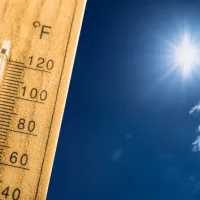
 iStock/Thinkstock(NEW YORK) — President Donald Trump’s decision to pull out of the landmark Paris climate agreement could have far-reaching consequences on climate and fossil fuel emissions in the future.
iStock/Thinkstock(NEW YORK) — President Donald Trump’s decision to pull out of the landmark Paris climate agreement could have far-reaching consequences on climate and fossil fuel emissions in the future.
While climate change and pollution are often discussed in terms of environmental damage, they can also greatly impact public health.
Under the Paris agreement, the U.S. said it would cut carbon emissions by 26-28 percent from 2005 levels by 2025, and parties agreed to try to hold global temperatures to no more than 2 degrees Celsius above temperatures in the late 1800s.
Jeffrey Shaman, director of the Climate and Health Program at the Mailman School of Public Health at Columbia University, pointed out that a changing climate may mean fundamental changes to human health.
Acquiring and using fossil fuels has led to the disruption of the climate system that humans have come to rely on, Shama said. He said civilization developed during the 11,000 year period of climate stability.
“That disruption is a fundamental stressor on our system,” Shama said.
Without that climate stability, Shaman and other public health officials have found that there are risks to public health from multiple factors, including extreme weather, spreading populations of insects and irritating airborne pollutants.
Cardiovascular Disease
The World Health Organization reports that exposure to airborne pollutants increases the risk of numerous cardiovascular diseases, including stroke, chronic obstructive pulmonary disease and lung cancer. They estimate approximately 3 million deaths a year are linked to exposure to outdoor air pollution.
“Air pollution continues take a toll on the health of the most vulnerable populations — women, children and the older adults,” Flavia Bustreo, assistant director general at WHO, said in a statement. “For people to be healthy, they must breathe clean air from their first breath to their last.”
The American Heart Association reports that air pollution is believed to have inflammatory effects on the heart, which increases the chance of cardiovascular problems. Pollution particles released by fossil fuel combustion may be so small that they can more easily enter the body and irritate the lungs and the key blood vessels near the heart and lungs, according to the American Heart Association.
In some cases, people who already have underlying heart disease can have a heart attack that is triggered by high levels of pollutants, according to the American Heart Association.
“This kind of pushes them over the cliff,” Dr. Russell Luepker, a cardiologist and a professor in the School of Health at the University of Minnesota, said in a statement.
Asthma
Putting more ozone and other pollutants in the air can exacerbate or trigger asthma attacks in people with the condition.
The pollutants are believed to harm the respiratory system by causing inflammation and bronchospasms, among other irritations. Infants and children are particularly at risk due to their size.
“Young children with asthma have long been regarded as a group who are very susceptible to adverse effects from air pollution because of their developing lungs, immature metabolic pathways, high ventilation rates per body weight, and increased time exercising outdoors,” researchers wrote in a 2014 study.
Insect-Borne Diseases
Changing weather patterns mean changing territory for insects and other animals that can spread disease.
Shaman said it’s still unclear exactly which species will be affected by a warmer climate, but that they have already seen some disease-spreading insects change habitats.
“A good example might be Aedes albopictus [mosquito],” Shaman said, explaining that the insect can spread dengue fever, chikungunya and Zika. “It’s been adapting in ways we haven’t seen it before.”
The insect has now been found in New York City and other areas farther north than expected.
Warmer temperatures have also been linked the spread of ticks from the Northeast to other areas of the country. As a result of this increase, which may also be due to a growing deer population, the U.S. Centers for Disease Control estimates there will be an increase of Lyme disease cases northward.
Heatstroke
The WHO estimates the earth’s temperature may rise between 1.8 to 4 degrees Celsius by the end of the century. This means longer, hotter summers and increasing heatwaves.
Cases of heatstroke or other heat-related illness such as hyperthermia could spike if temperatures continue to increase and heatwaves become more common. When weather gets too hot and humid, even sweating can’t cool down the internal body temperature, allowing it to rise to dangerous levels.
In the U.S. Global Change Research Programs’ Climate and Health Assessment, changing climate could mean an “increase of thousands to tens of thousands of premature heat-related deaths in the summer.”
Copyright © 2017, ABC Radio. All rights reserved.















